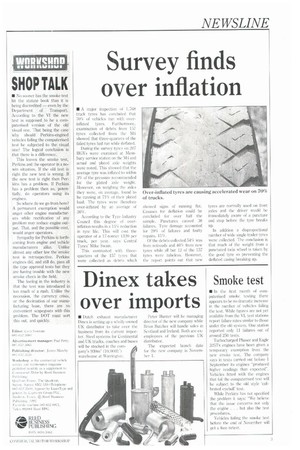SHO P TALK
Page 79

If you've noticed an error in this article please click here to report it so we can fix it.
• No sooner has the smoke test hit the statute book than it is being discredited — even by the Department of Transport. According to the VI the new test is supposed to be a computerised version of the old visual one. That being the case why should Perkins-engined vehicles failing the computerised test be subjected to the visual one? The logical conclusion is that there is a difference.
This leaves the smoke test, Perkins and the operator in a nowin situation. lithe old test is right the new test is wrong. If the new test is right then Perkins has a problem. If Perkins has a problem then so, potentially, do operators using its engines.
So where do we go from here? A permanent exemption would anger other engine manufacturers while rectification of any problem may reduce engine output. That, and the possible cost, would anger operators.
Sympathy for Perkins is forthcoming from engine and vehicle manufacturers alike. Unlike almost any other law the smoke test is retrospective. Perkins engines did, and still do, pass all the type approval tests but they are having trouble with the new smoke check in the field, The feeling in the industry is that the test was introduced in too much of a rush. Unlike the recession, the currency crisis, or the decimation of our manufacturing base, there are no convenient scapegoats with this problem. The DOT must sort this out, and quickly.




































































































